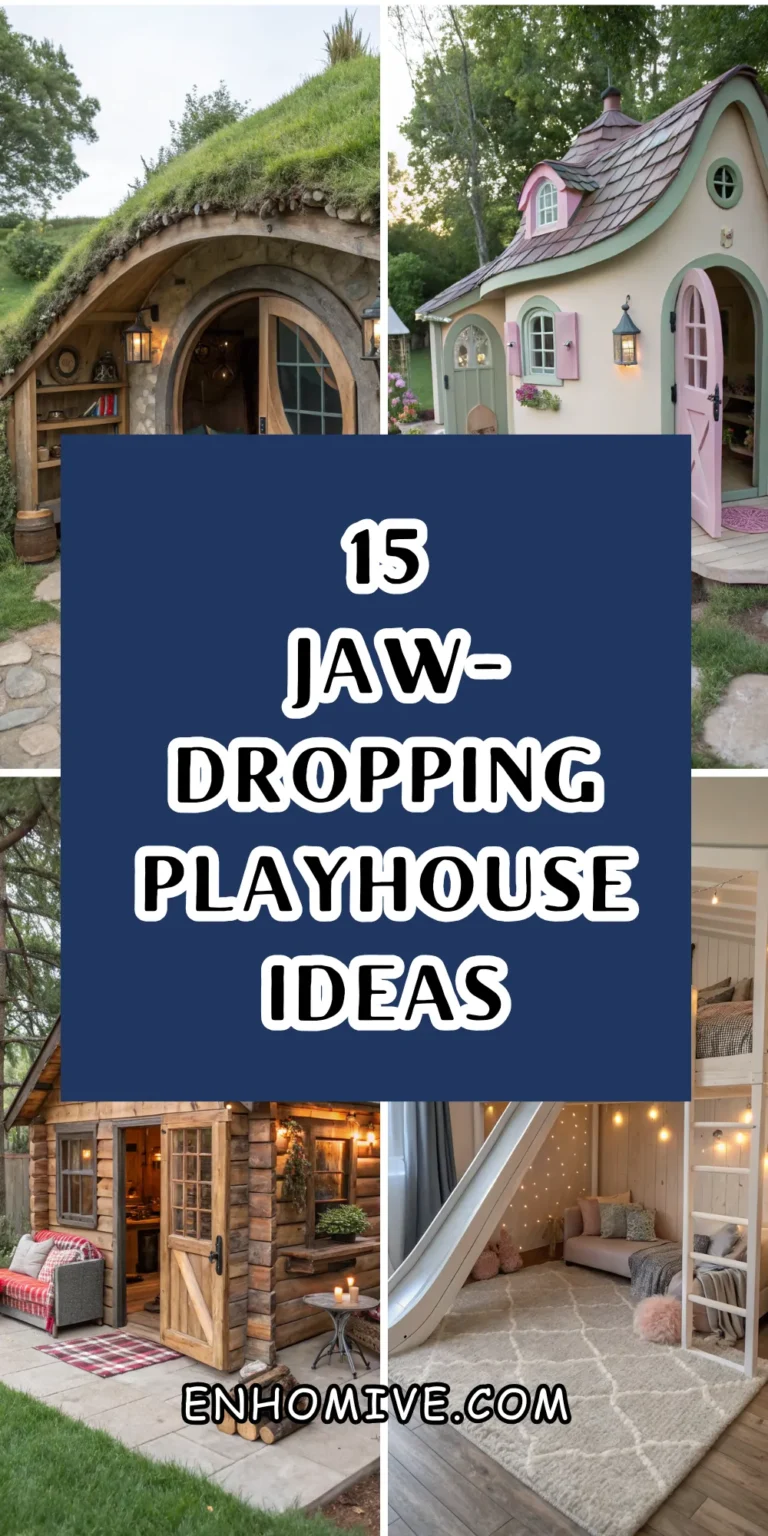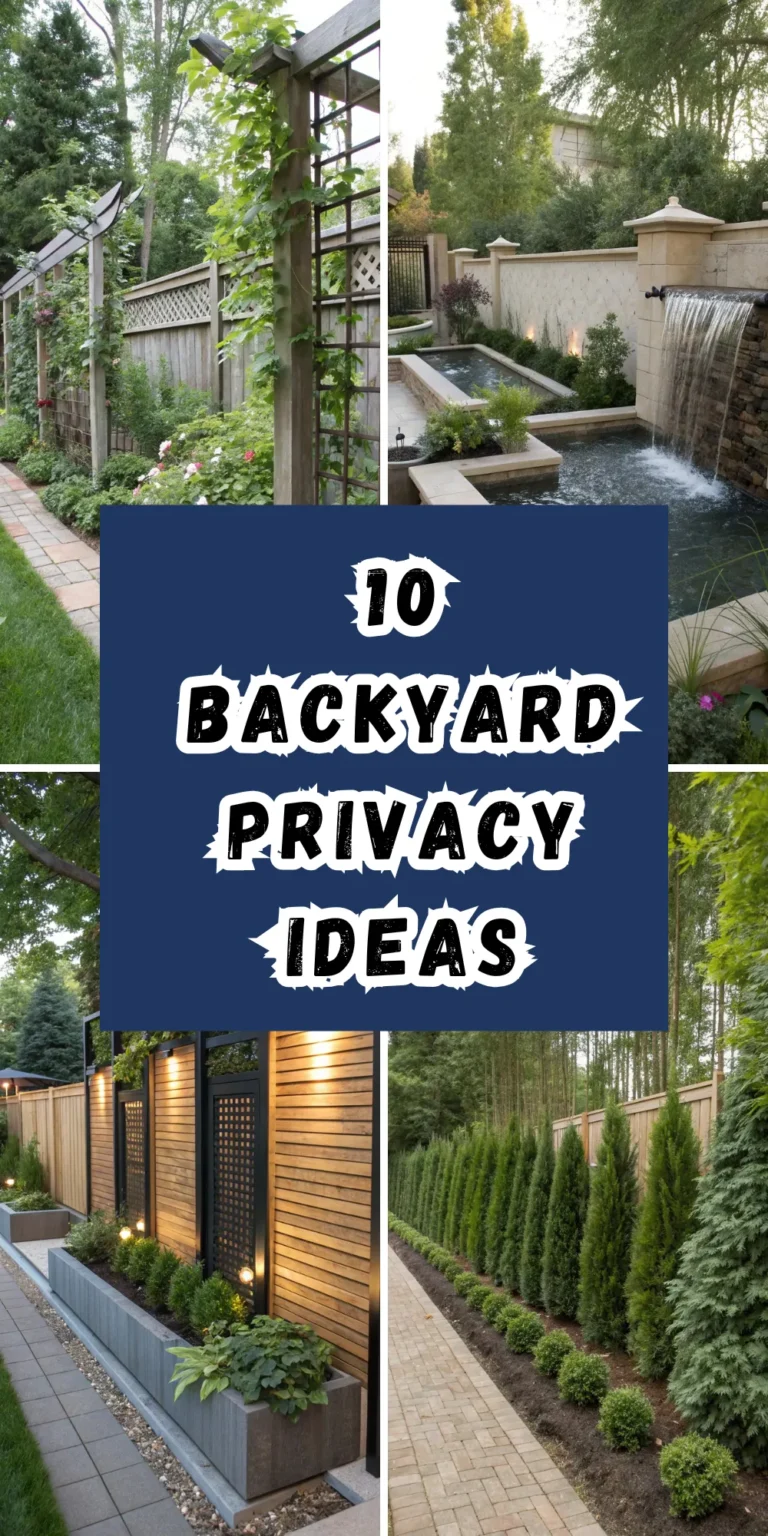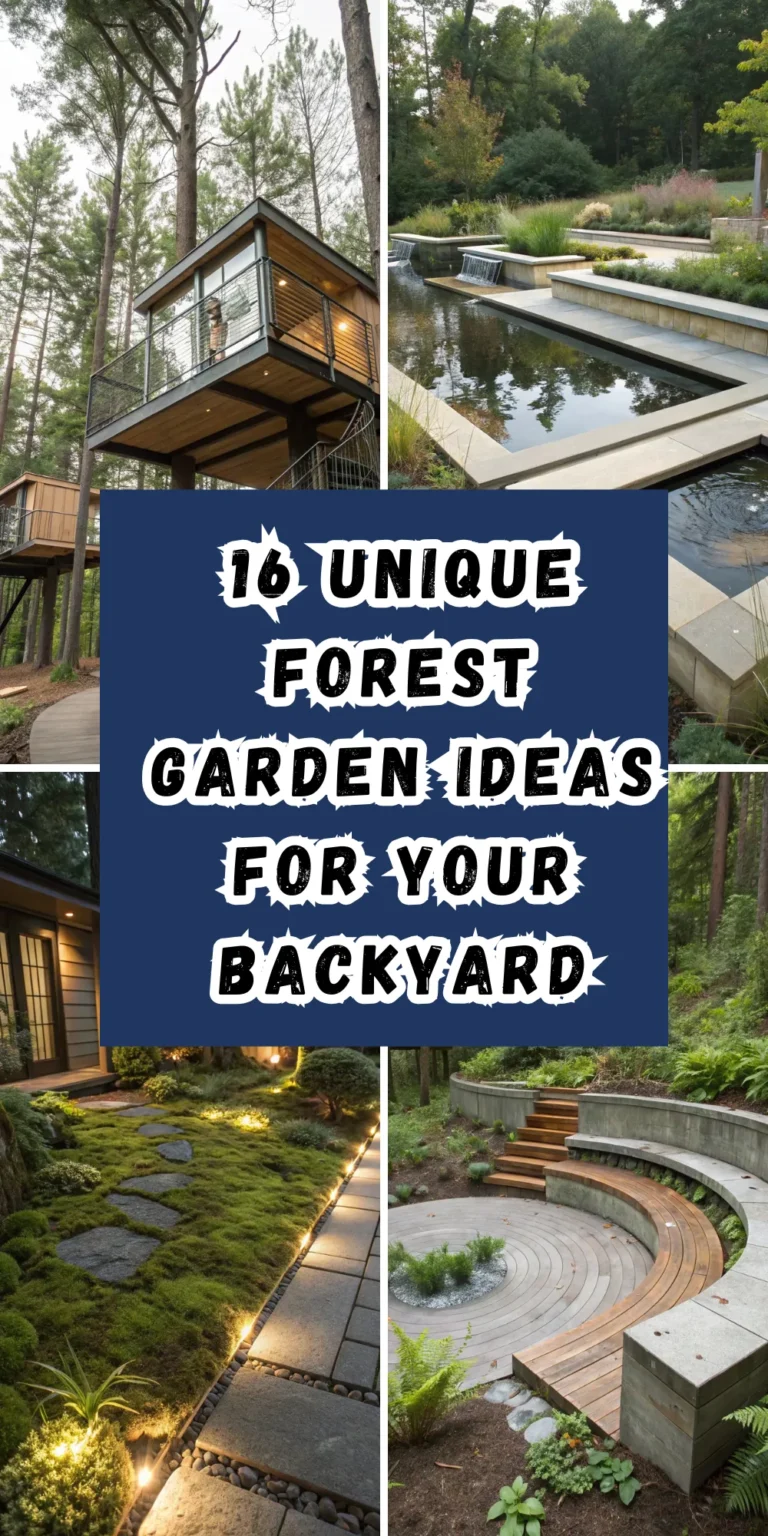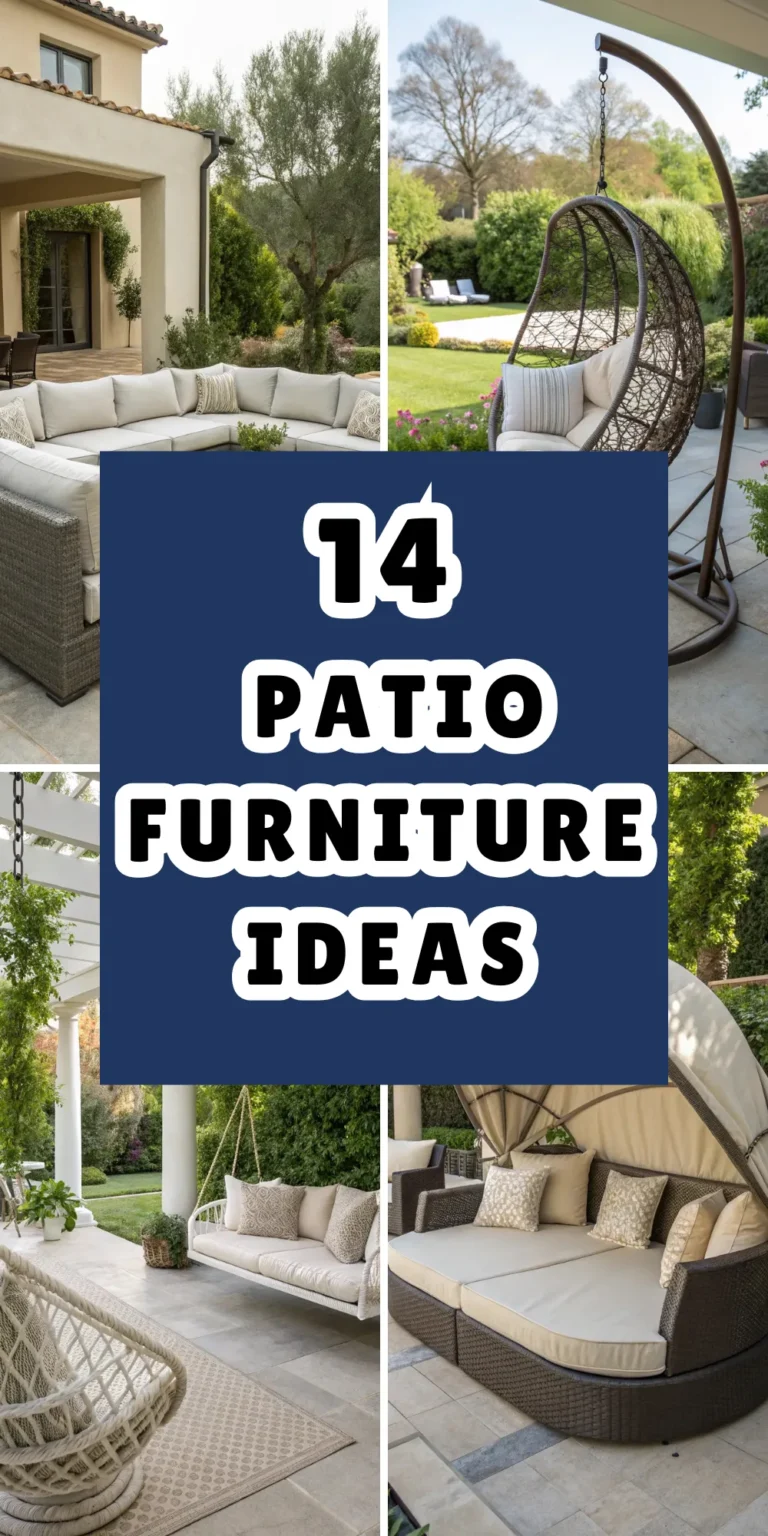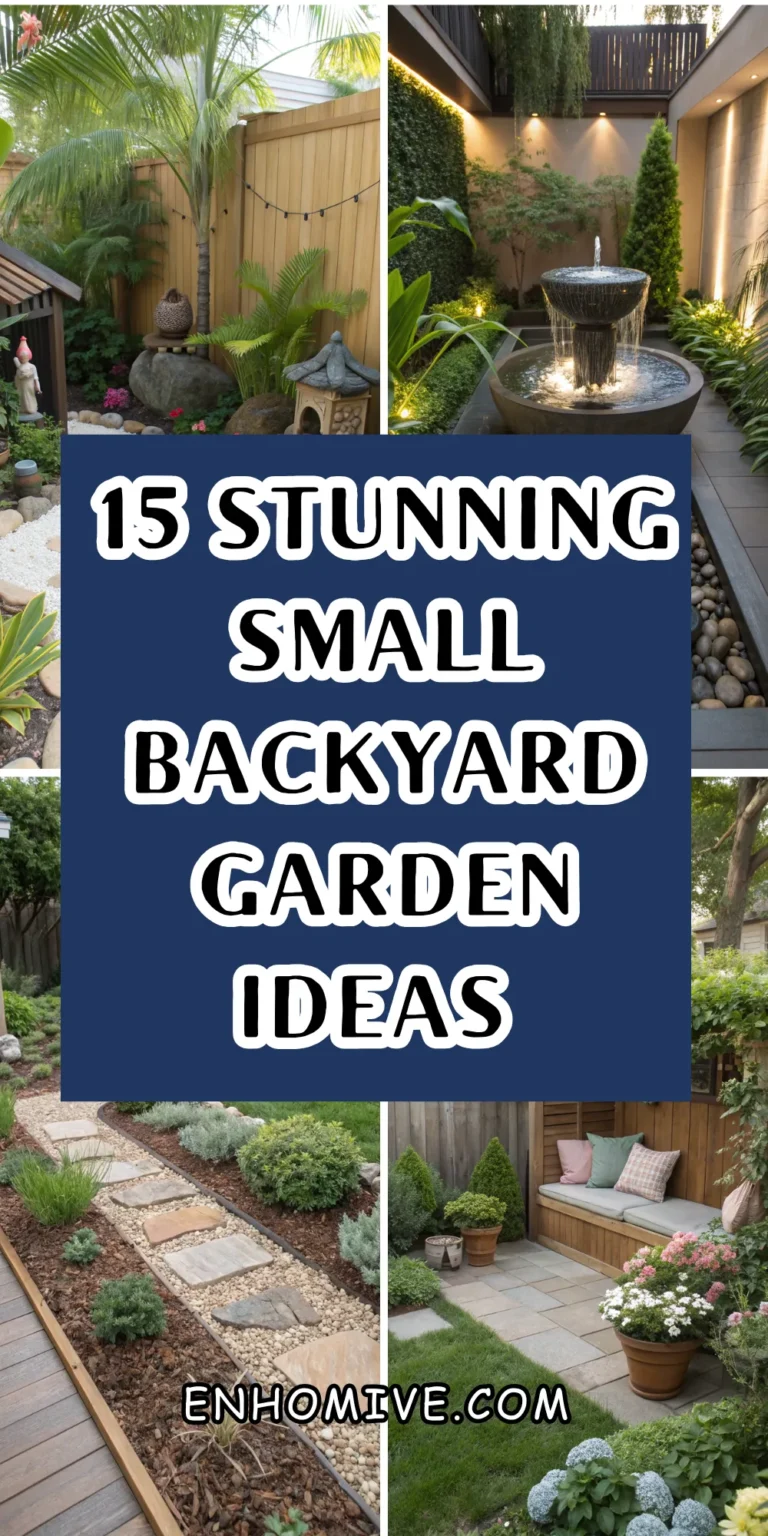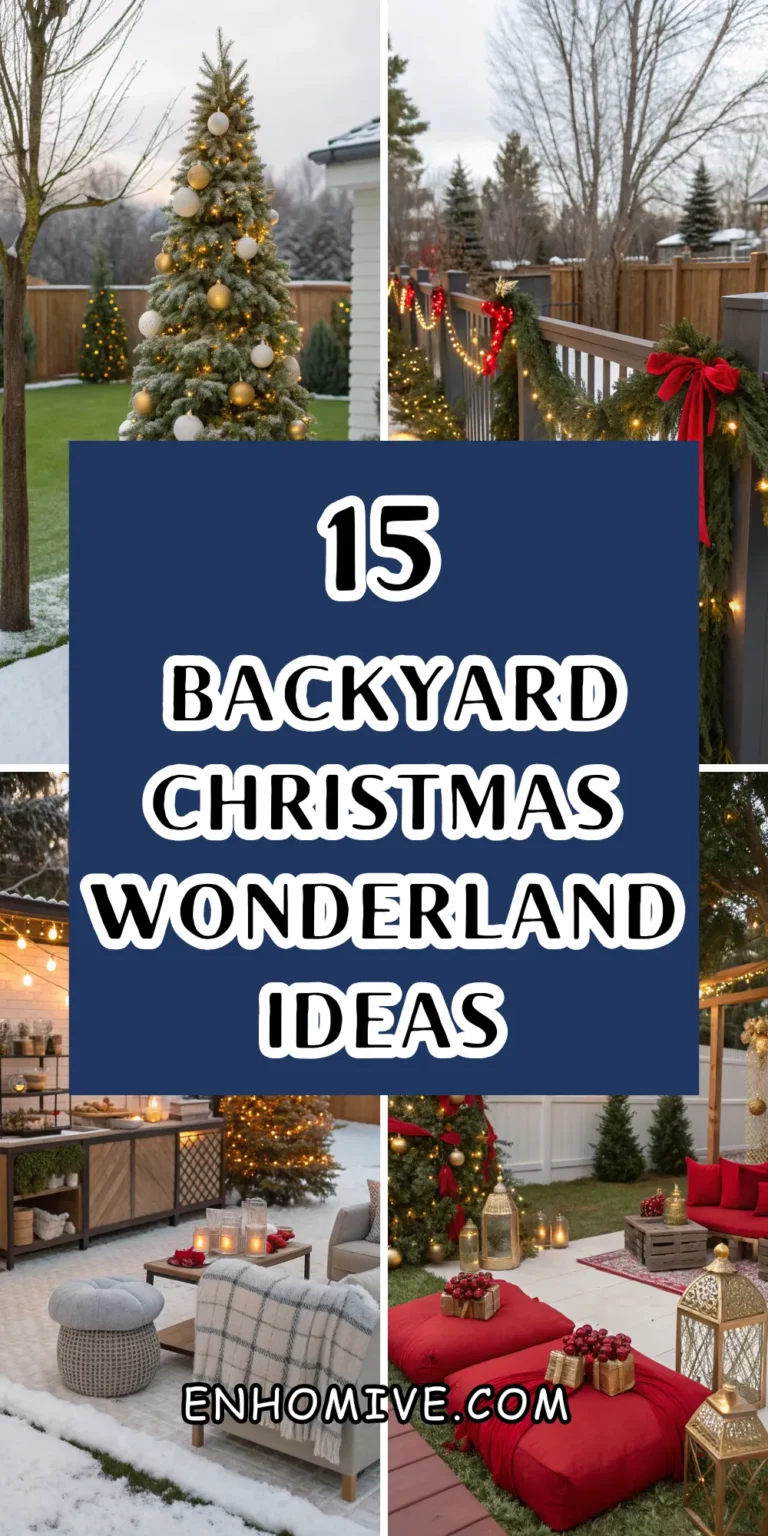15 Budget-Friendly Retaining Wall Ideas to Refresh Your Yard
Your sloped yard doesn’t have to drain your wallet to look amazing. Retaining walls solve practical problems like erosion and uneven terrain while creating opportunities for beautiful landscaping features.
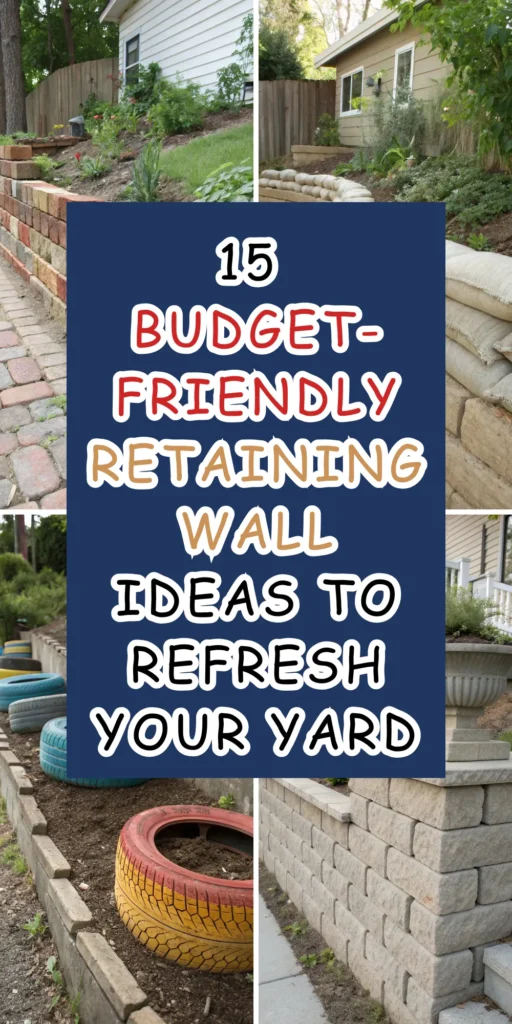
The best part? You can build stunning retaining walls on a tight budget using creative materials and smart DIY techniques that deliver professional-looking results without the professional price tag.
Concrete Block Construction
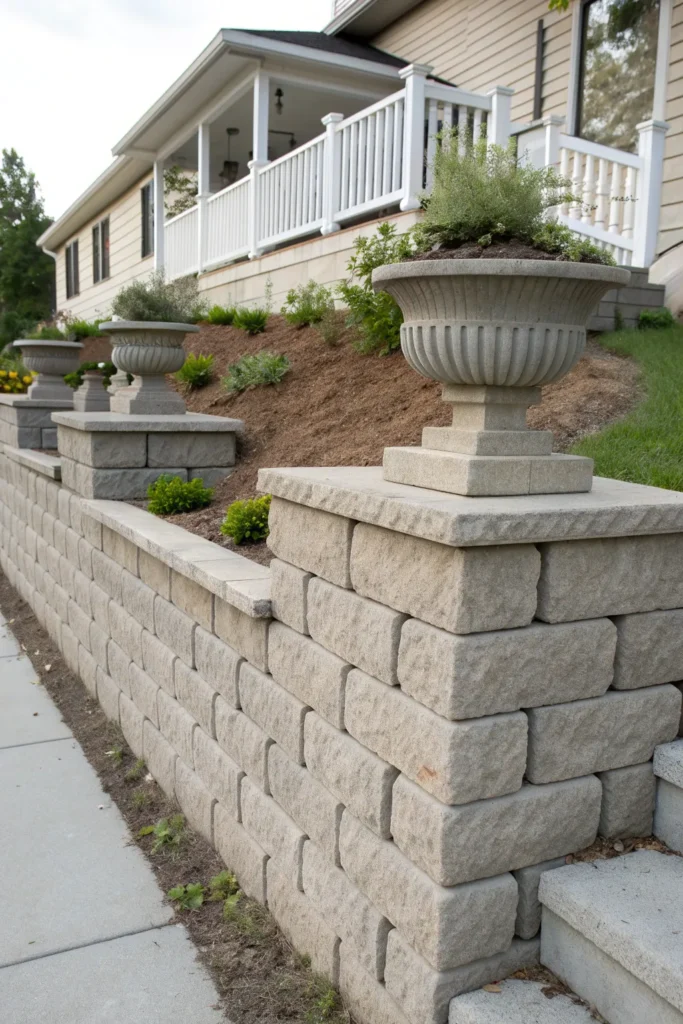
Standard concrete blocks offer incredible value for money when you need serious retaining power. Stack them without mortar for flexibility, or use construction adhesive for permanent installations. Paint or stain blocks to match your home’s exterior for a custom look.
Dress up basic blocks with caps, decorative facing, or integrated planters on top. The modular nature makes repairs easy and lets you build in phases as your budget allows. Choose blocks with textured faces for more visual interest than smooth surfaces.
Reclaimed Timber Walls
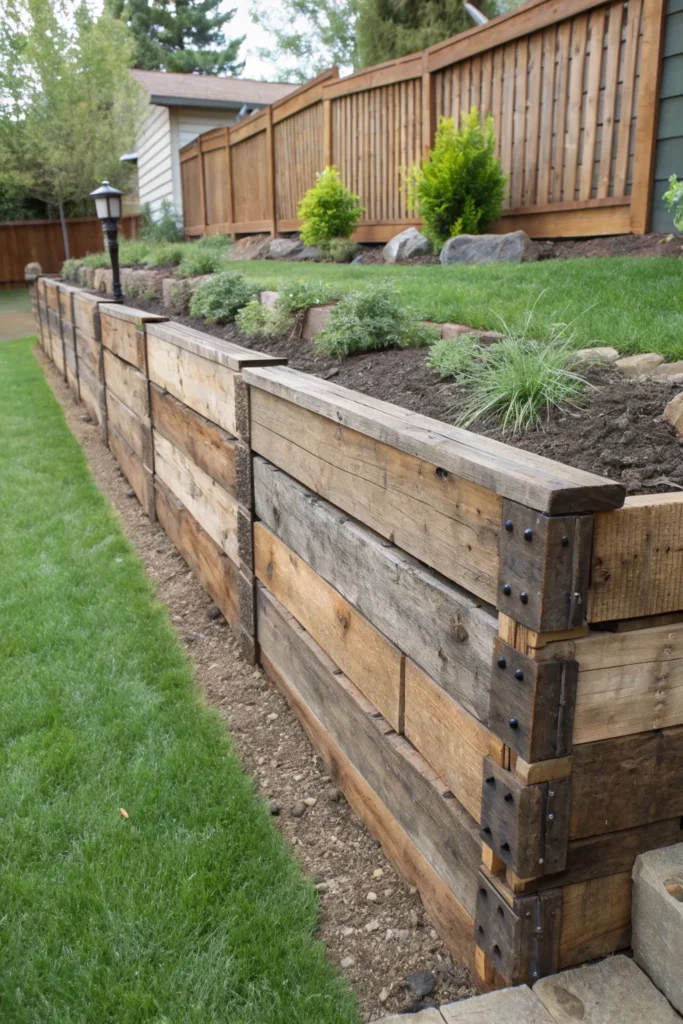
Hunt for reclaimed wood from construction sites, old barns, or demolition projects. Railroad ties, old fence posts, and salvaged lumber create rustic charm while solving drainage issues naturally. Sand and seal wood for longevity.
Stack horizontal timbers and secure with rebar or metal brackets for stability. Vary the wood widths and tones for organic appeal. Check wood sources carefully to avoid treated lumber that might leach chemicals into soil where you plan to grow plants.
Gabion Basket Systems
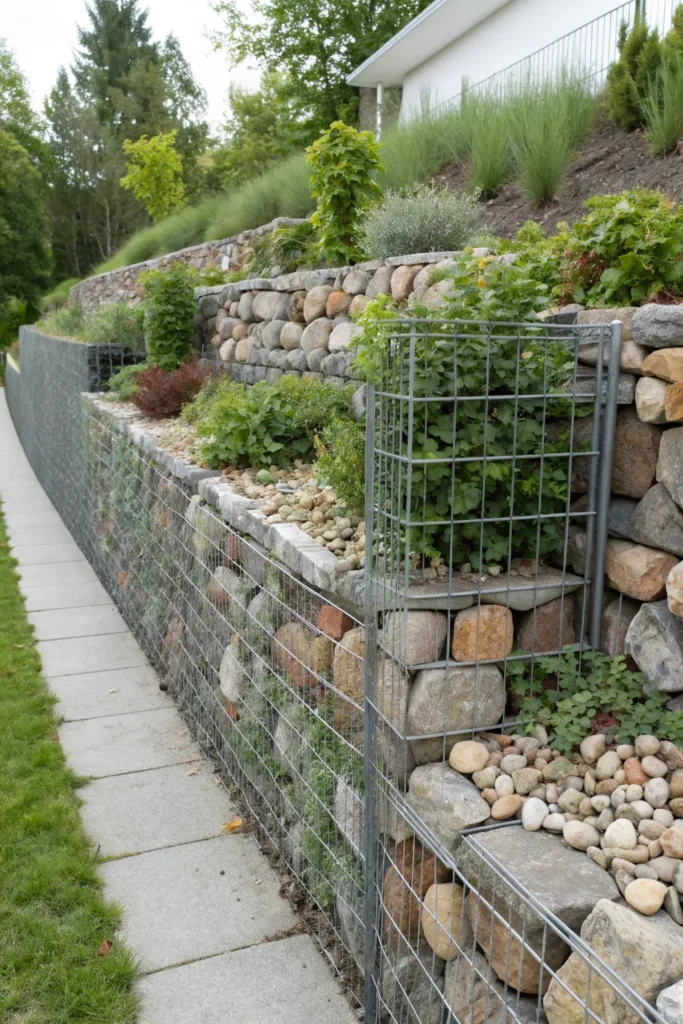
Fill wire baskets with rocks, concrete chunks, or decorative stones for industrial-chic retaining walls. Gabion systems handle significant soil pressure while allowing water drainage. You can often source fill materials cheaply or even free from construction sites.
Mix different stone sizes and colors within baskets for visual texture. These walls age beautifully as vegetation grows through the gaps. Assembly requires no special skills, just patience to fill baskets evenly for the most attractive results.
Tire Retaining Walls
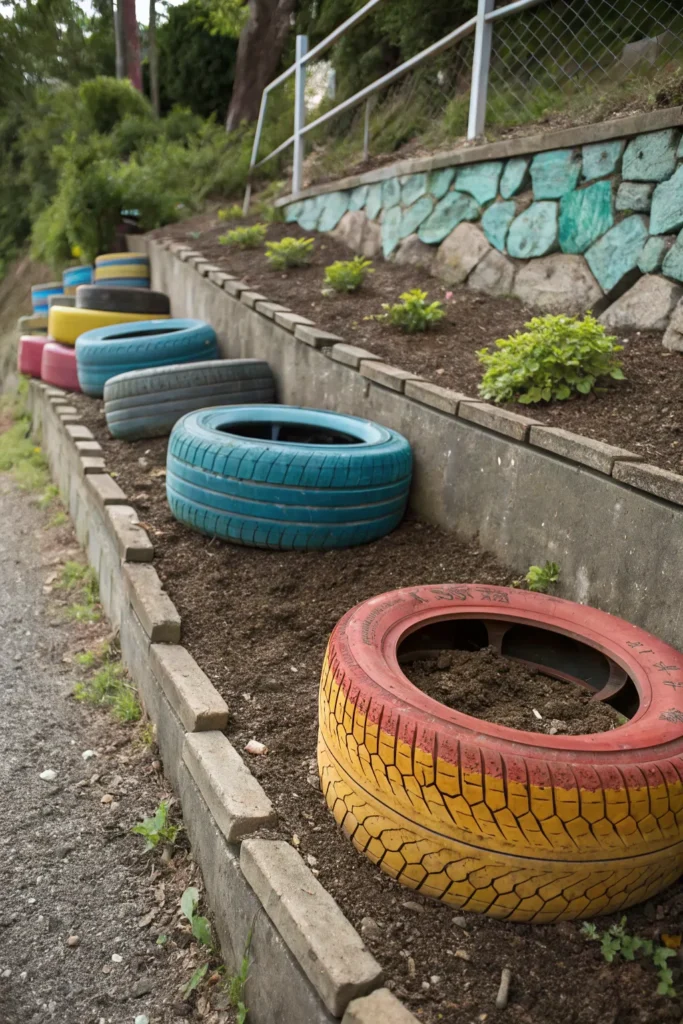
Old tires stacked and filled with soil create effective terraced retaining systems for steep slopes. Paint tires in bright colors for playful appeal or earth tones for subtle integration. This approach recycles materials while solving erosion problems.
Fill tires with gravel at the bottom for drainage, then add quality soil for planting. Stagger placement for more natural-looking terraces. This method works particularly well for vegetable gardens or areas where you want to plant directly in the retaining structure.
Natural Stone Stacking
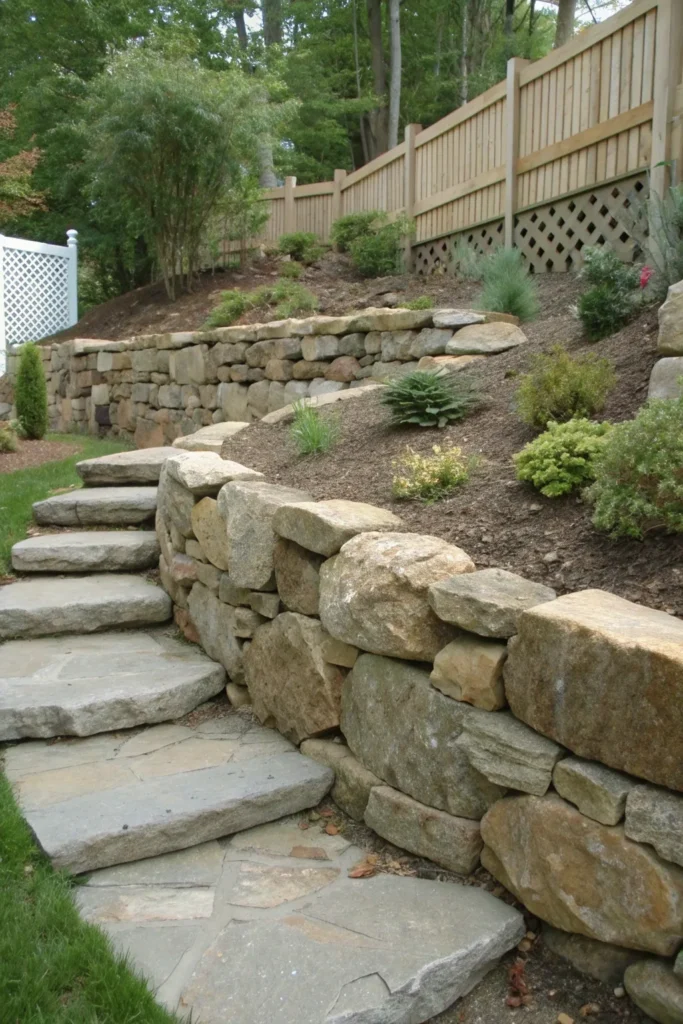
Collect fieldstone, river rock, or quarry remnants to build dry-stack walls that blend beautifully with natural landscapes. This technique requires no mortar and creates gaps perfect for drainage and plant establishment.
Sort stones by size and shape before starting construction. Place larger, flatter stones as your base and work upward with progressively smaller pieces. The irregular nature creates organic appeal that feels like it belongs in the landscape rather than imposed upon it.
Brick Alternatives
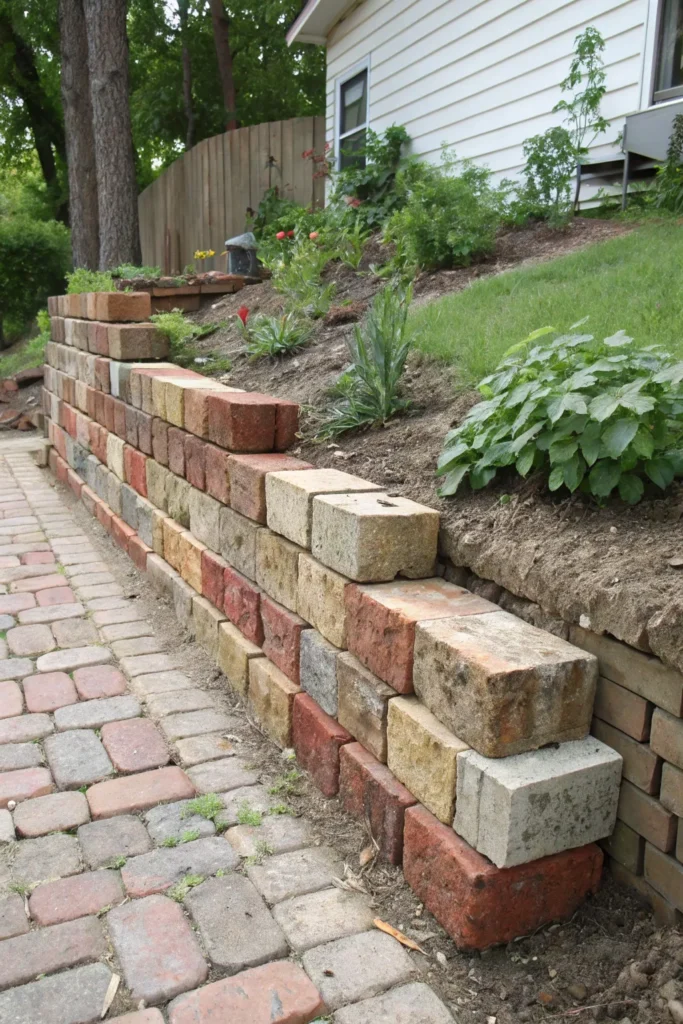
Hunt salvage yards and demolition sites for free or cheap bricks. Even damaged or mismatched bricks work well for retaining walls where perfect uniformity isn’t necessary. Create patterns with different brick orientations for added visual interest.
Clean bricks thoroughly before installation and consider how weathering will affect appearance over time. Mix brick colors and ages for character, or paint them for a more uniform contemporary look. Proper drainage behind brick walls prevents frost damage.
Interlocking Block Design
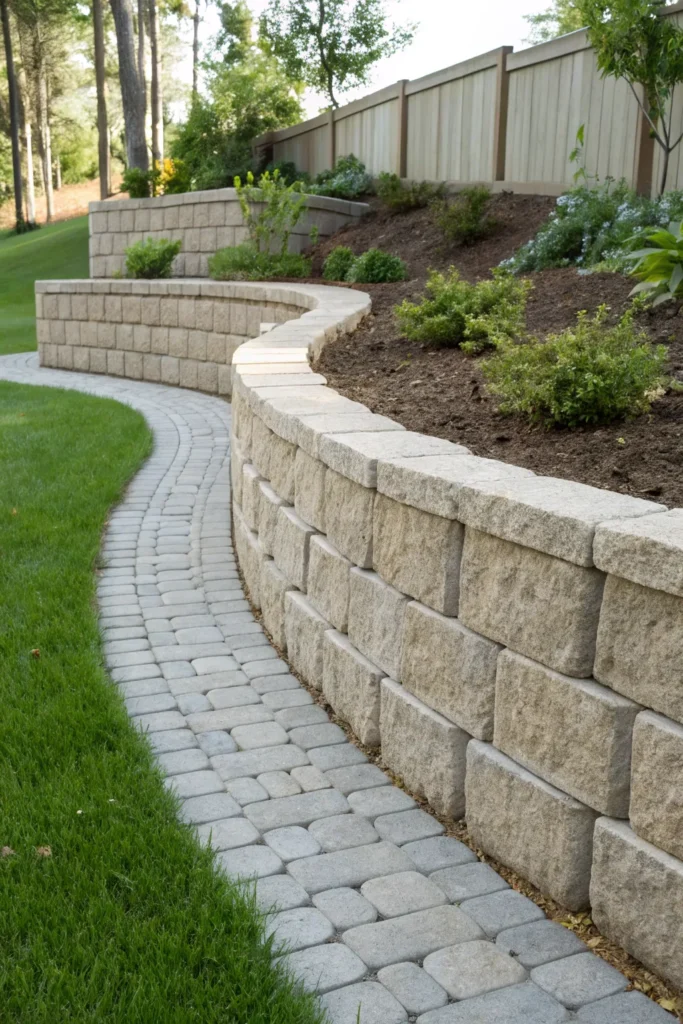
Modern interlocking blocks snap together without mortar while creating professional-looking curves and corners. Many manufacturers offer budget-friendly lines that mimic expensive natural stone at a fraction of the cost.
These systems often include built-in drainage channels and connecting mechanisms that make installation straightforward for DIYers. Choose blocks with textured faces that won’t look obviously manufactured once installed. Some systems allow you to add decorative caps later when budget permits.
Terraced Garden Beds
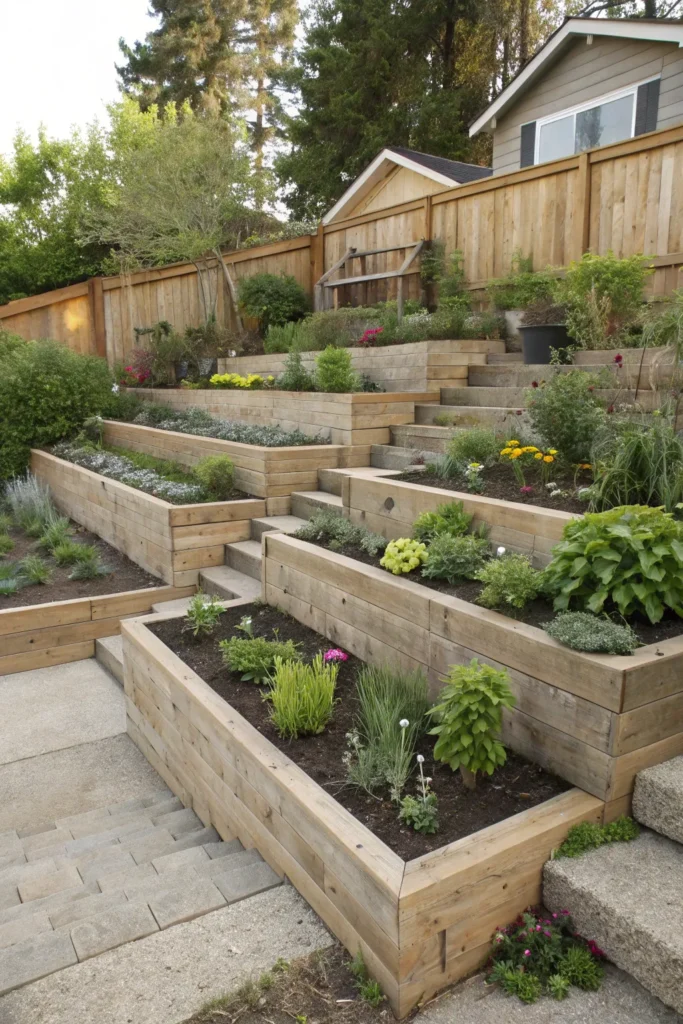
Create multiple low retaining walls instead of one tall expensive structure. This terraced approach distributes soil pressure while creating distinct planting zones. Use different materials for each level to add visual interest.
Build terraces with treated lumber, concrete blocks, or stone depending on your budget and aesthetic preferences. Plant each level with different varieties to create a cascading garden effect. This approach lets you tackle the project in phases as time and money allow.
Concrete Bag Retaining
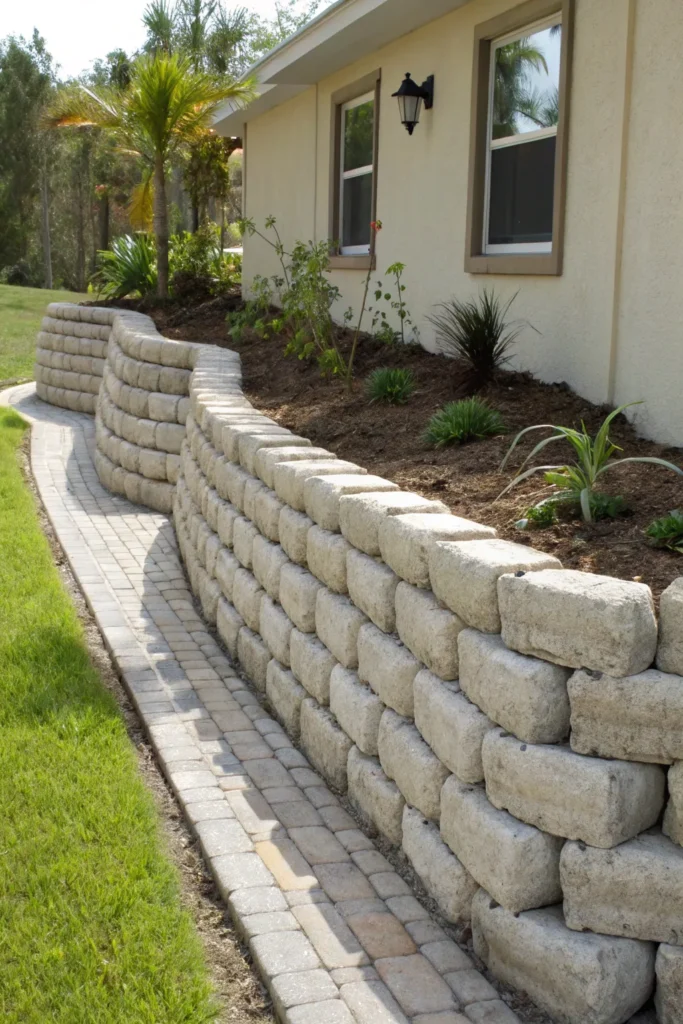
Stack concrete bags like building blocks, then water them to cure in place. This technique creates solid walls quickly without mixing concrete or needing forms. Cut bags strategically to create drainage weep holes.
Cover finished walls with stucco, stone veneer, or paint for attractive finishes. This method works best for walls under four feet tall where bag weight won’t become unwieldy. Add decorative caps or coping stones for a more finished appearance.
Pallet Wood Construction
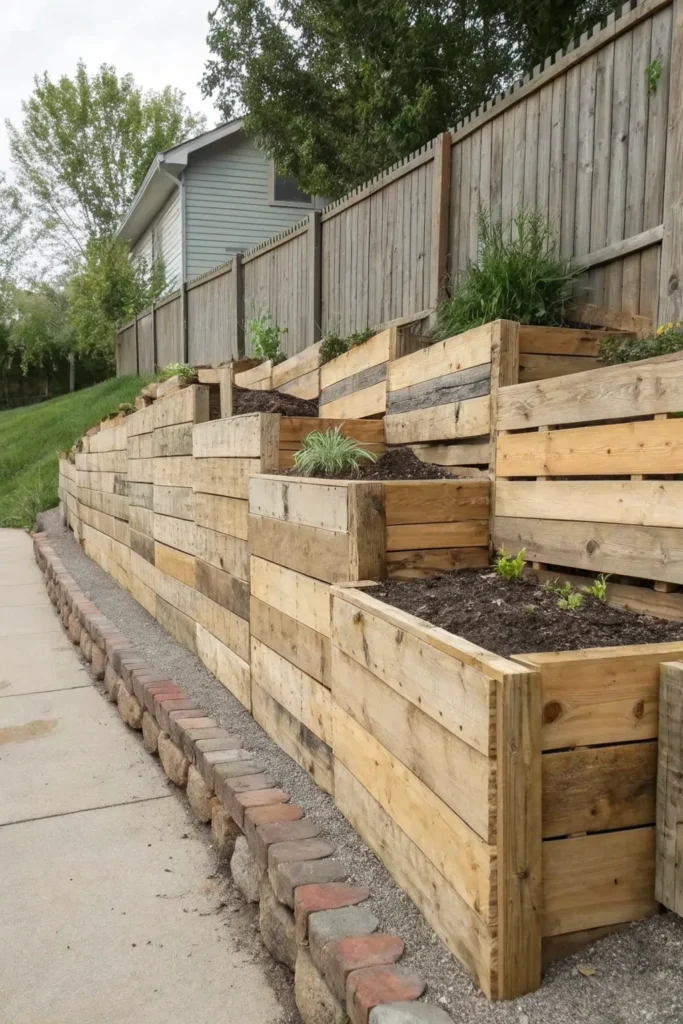
Source free pallets from businesses and repurpose them into rustic retaining walls. Disassemble pallets carefully to preserve usable boards, then reconstruct into custom sizes that fit your specific needs.
Treat wood with sealers to extend life in outdoor conditions. Back pallet walls with landscape fabric to prevent soil migration while allowing water drainage. This approach works particularly well for raised garden beds and lower retaining structures.
Hybrid Material Mixing
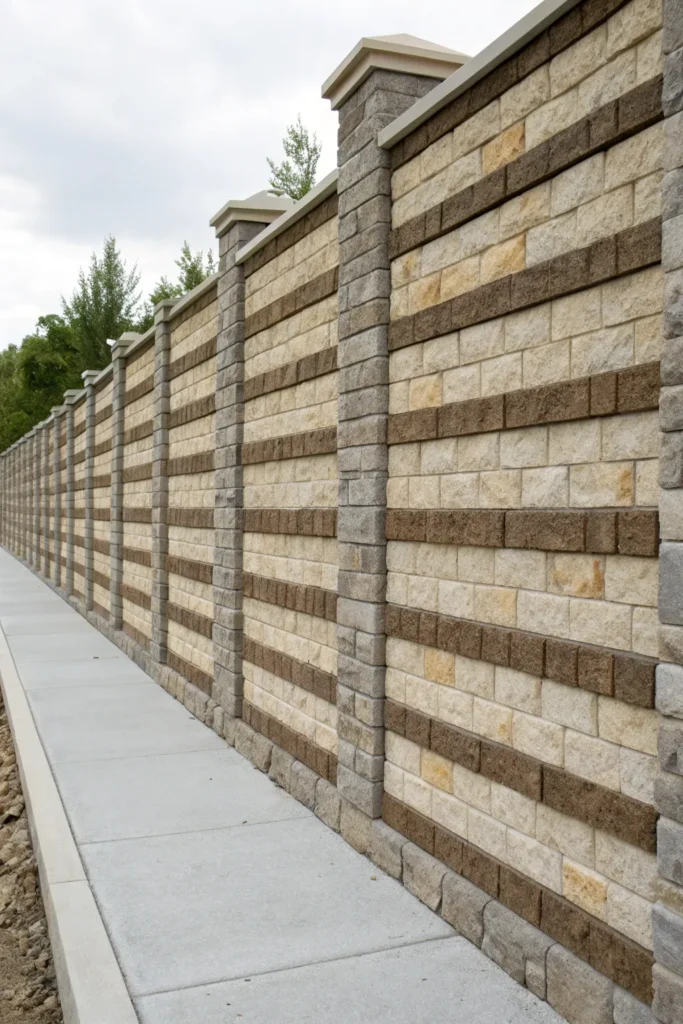
Combine different budget materials to create unique looks that appear more expensive than their component costs. Mix concrete blocks with natural stone caps, or alternate rows of different materials for striped effects.
This approach lets you splurge on small amounts of premium materials while using budget options for the bulk of construction. Plan material placement carefully to ensure the most visible areas get the nicest treatments.
Reinforced Earth Bags
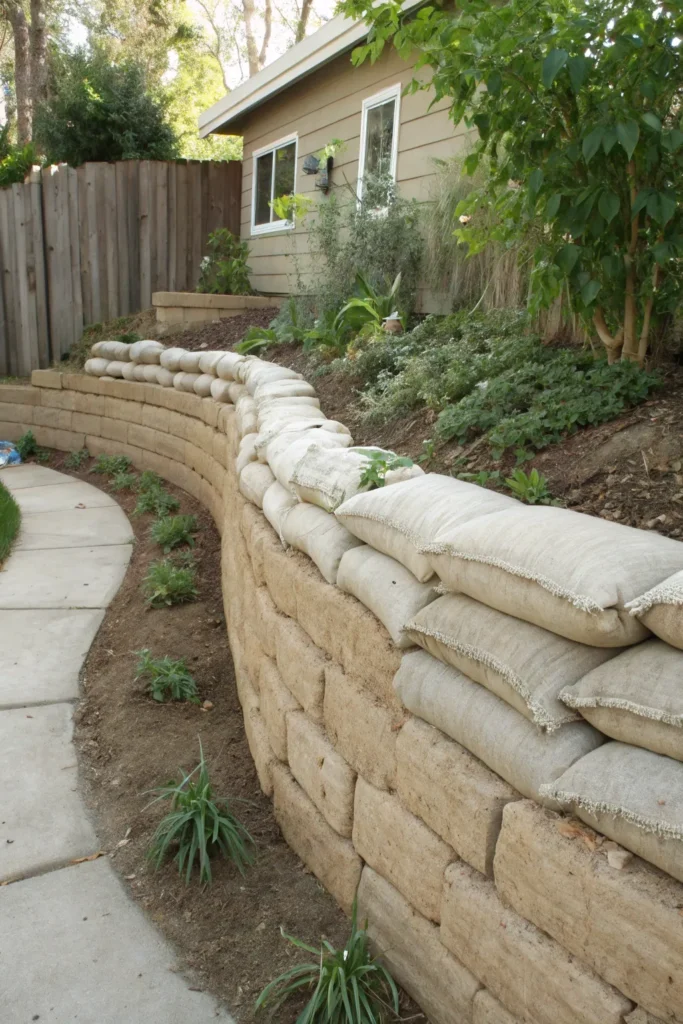
Fill burlap or polypropylene bags with soil and cement mixture to create curved, organic-looking retaining walls. This ancient technique updates beautifully for modern applications while using minimal purchased materials.
Layer bags like masonry, compacting each course before adding the next. Cover finished walls with stucco or natural plaster for weather protection. This method creates incredibly strong walls that handle significant soil pressure while maintaining budget-friendly costs.
Stepped Timber Design
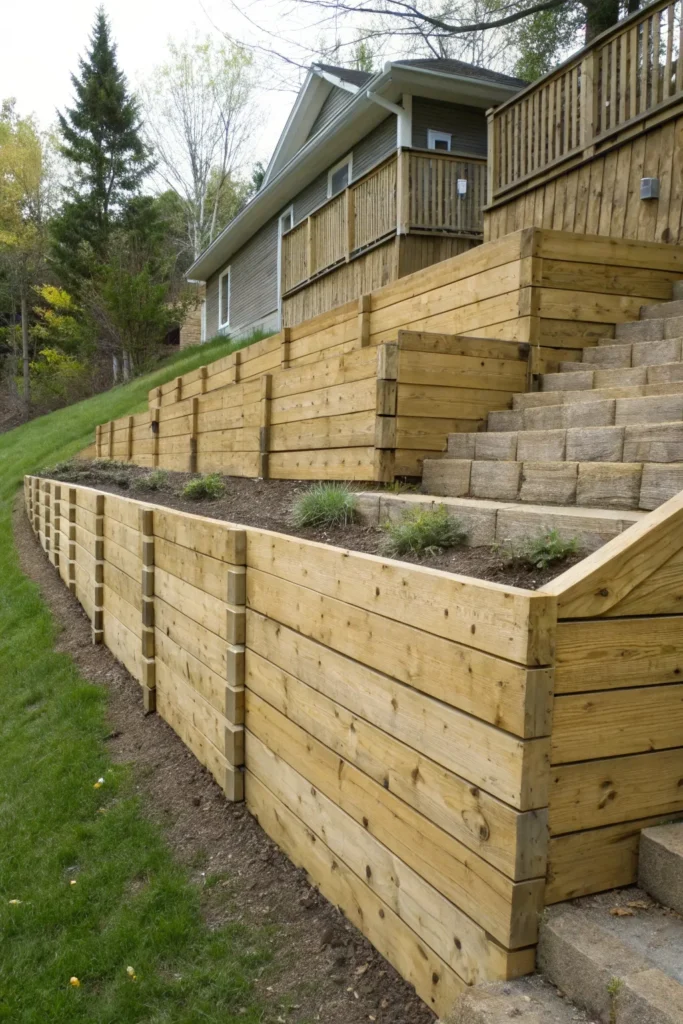
Use pressure-treated lumber in stepped configurations that create visual interest while handling soil retention duties. Vary board heights and depths to break up long stretches and add architectural appeal.
Anchor timber walls with rebar or deadman anchors for stability. Consider how water will drain through and around the structure. Stepped designs work particularly well on gentle slopes where dramatic height changes aren’t necessary.
Broken Concrete Recycling
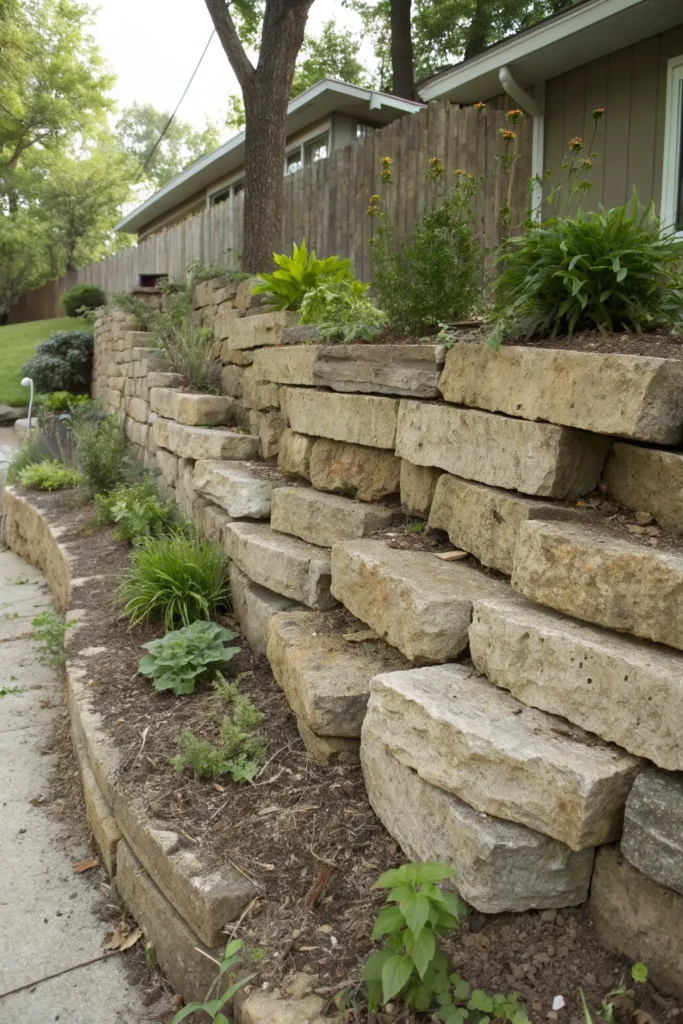
Source broken concrete slabs from demolition projects and stack them like natural stone. This “urbanite” approach recycles materials while creating substantial retaining walls that age beautifully as plants establish between gaps.
Clean concrete pieces and stack with larger pieces at the bottom for stability. The irregular shapes create more interesting patterns than manufactured blocks. This material often costs nothing more than pickup and transportation expenses.
Living Wall Systems
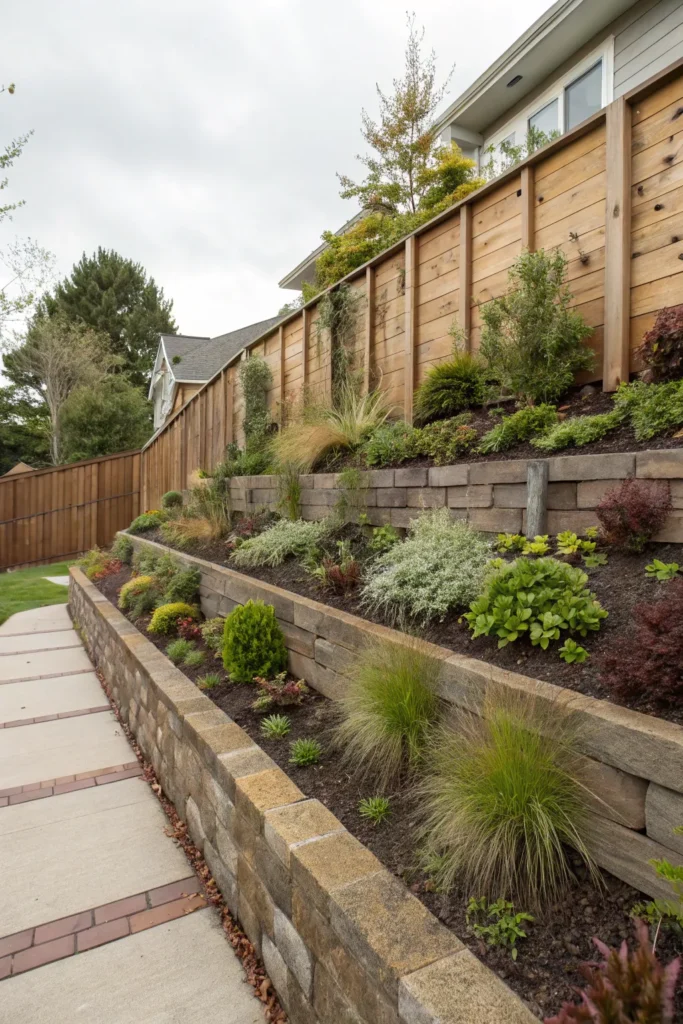
Plant retaining walls directly with groundcover, small shrubs, or grasses that stabilize soil with their root systems. Combine plantings with minimal hardscape materials like timber or stone to create hybrid solutions.
This approach takes time to establish but creates beautiful natural barriers that improve with age. Choose plants appropriate for your climate and soil conditions. Consider how seasonal changes will affect both the structural integrity and visual appeal.
You don’t need to spend thousands to solve slope problems and create beautiful yard features. These budget-friendly retaining wall ideas prove that creativity and sweat equity often matter more than expensive materials. Start with proper planning and drainage considerations, then choose the approach that fits your skills, timeline, and budget. Your yard will thank you with better usability and curb appeal that looks like you invested far more than you actually spent.

